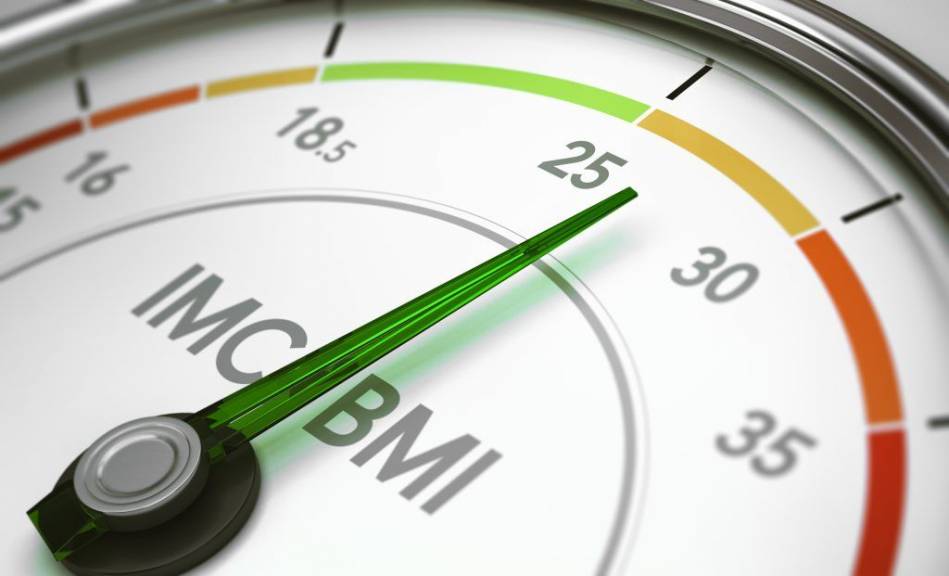
Body Mass Index: A tool to help you keep a healthy weight

The Body Mass Index (BMI) is an estimation made of a person’s weight health with a simple equation that uses height and weight to estimate their body mass. Although it doesn’t measure body fat percentage directly, it is a useful index to determine someone’s weight range, whether it is underweight, normal or overweight.
This index is especially useful to understand when a person’s weight may lead to health risks and when to take action to return to a normal healthy weight through physical activity and diet.
In this article we explain you everything your need to know about your BMI, how to calculate it, the benefits and limitations of this formula, and the importance of maintaining a healthy weight according to your body’s composition.
Everything you need to know about BMI
The Body Mass Index is a calculation used as an indirect method to measure a person’s body fat category and, unlike other fitness-related formulas such as the Basal Metabolic Rate (BMR), the BMI formula can be used for both men and women.
Doctors use the results of this formula together with other factors such as waist size, blood sugar levels and other tests, to determine if someone’s weight is putting them at a higher risk for diseases associated with weight ranges that are too high or too low.
How to calculate your BMI
You can calculate your BMI using metric or imperial measurements.
- Metric: BMI = kg/m2
- Imperial: BMI = lbs x 703/in2
In other words, to calculate your Body Mass Index in metric units you should divide your weight in kilograms (kg) by the square of your height in meters (m2). While for imperial units you need to multiply your weight in pounds (lbs) by 703, and then divide by the square of your height in inches (in2).
There are also plenty of websites that offer an online BMI calculator, in which you just need to fill in your measurements and it will do the calculation for you and tell you the weight range you are in.

What are the standard weight status categories?
The possible results of the Body Mass Index can be allocated among the following weight ranges:
- A BMI below 18.5 – Underweight: You may need to put on some weight by increasing your calorie intake. It would be recommended to approach a doctor or a nutritionist that can help you with a meal plan that fits your needs.
- A BMI between 18.5 and 24.9 – Healthy: It indicates you are on a weight that is considered healthy or balanced to your body composition. This is the range you should aim at.
- A BMI between 25 and 29.9 – Overweight: Your weight is above the ideal level. It would be recommended for you to start a weight-loss journey by decreasing your calorie intake and performing regular cardiovascular activity that helps you burn fat.
- A BMI over 30 – Obese: This indicates you are heavily overweight and at serious risk of different health conditions such as cardiovascular diseases, type 2 diabetes, musculoskeletal disorders and even cancer. You must visit a doctor for further analysis and recommendations on how to recover your health.
What is the normal BMI for a child?
Although the same formula is used to calculate the Body Mass Index of children and teenagers, it is important to highlight that boys and girls develop at different rates and their gender and sex should be considered during the calculation.
Doctor’s don’t use the standard BMI ranges for children and teens because:
- body fat percentage varies at different ages
- body fat changes are normal throughout puberty
- children are constantly growing taller
- age and gender play a role in the result analysis.
Because of this, instead of checking your child’s BMI and putting it on the usual weight categories, a chart that includes these additional factors is used to determine whether the child is at a healthy weight or not. It is always recommended to consult your child’s nutrition and weight with a healthcare provider that can give professional advice based on the analysis of the chart results.
Limitations of Body Mass Index
One of the biggest arguments against the BMI index is that it fails to discriminate fat from muscle. This means that, for example, a bodybuilder with a lot of muscle and very low fat percentage, could be in the same BMI range that someone who’s weight is mostly coming from fat instead of muscle, given they are both the same weight and height. Therefore, the BMI is hardly an indication of health.
However, not everyone is a bodybuilder, so for the majority of people with an average lifestyle and eating habits BMI is a safe and accurate way to categorize people into their weight range 80% of the time. It is also important to remember that the purpose of the BMI index isn’t necessarily to determine your fitness level, but to be able to recognize whether you are at risk of the many medical conditions associated with obesity or malnutrition.
If your goal is a more detailed analysis of your fitness and health, there are some other alternatives that can give you a better understanding of your body, such as:
- Waist-to-height ratio = Waist circumference / Height
This measurement gives priority to the analysis of central fat. Central fat is the one that is collected around the organs in your midsection and is highly associated with problems such as heart disease. Obesity is defined by a waist-height above 0.53 for men or 0.54 for women.
- Waist-to-hip ratio = Waist circumference / Hip measurement
If the ratio is higher than 0.85 for women or 1 for men, it is associated with a higher risk.
- Body Composition Analysis:
Although you might need to approach a gym or a healthcare professional to have access to these machines, this analysis is great to be able to see how much skeletal, muscle and fat mass you have, not only in your body in general, but also in each body segment. It is a very accurate way to measure the current state of your body.
The benefits of losing and maintaining a healthy weight
Keeping a normal weight is important, as it is one of the biggest signs of your body’s health; being underweight or overweight can be cause or consequence of your body going through serious health irregularities.
The following health problems are associated with obesity:

- Breathing issues: A larger body and higher amount of visceral fat can prevent your lungs from expanding fully and working to the needed capacity, meaning you won’t be able to get enough air. In addition to lower lung function, the reduction of the oxygen transported in the body can also bring additional health problems.
- Fatty liver disease: Too much fat around your liver may cause it to eventually shut down completely. The liver is the body’s largest solid organ and is vital, it regulates chemical levels in the blood and produces bile to help carry out waste products. It is also responsible for the metabolism of fats, protein and carbohydrates. Gallstones are also a problem associated to liver malfunction and high cholesterol.
- Osteoarthritis: A heavier body puts more strain on your joints and cartilage, causing pain and lack of mobility. A higher body fat percentage my cause inflammation.
- Type 2 diabetes: Higher belly fat is linked to insulin resistance. As insulin is responsible for getting glucose out of your blood, your blood sugar levels increase when belly fat is preventing the body from using insulin properly. Around 80% of the people suffering from type 2 diabetes are overweight.
- High blood pressure: With fat blocking your circulatory system and your body being larger, the heart needs to pump harder in order to get blood to all of your cells. Such intense pumps result in deterioration of your artery walls. Circulatory problems can lead to heart attack, heart failure or stoke.
The following health problems are associated with being underweight:
- Malnutrition: If your body isn’t getting enough nutrients through healthy foods, it won’t have the fuel and energy it needs to perform all of its basic functions. If you are constantly feeling tired, constantly getting sick, or suffering from hair loss, dry skin or teeth issues, you may be in need of a healthier diet with more food.

- Decreased immune function: Lacking the right nutrients, especially vitamins and minerals can leave you at a higher risk of getting sick and suffer from different illnesses such as the common cold. Vitamin D deficiency is highly linked with a lower immune function.
- Osteoporosis: On a similar note, lack of minerals is cause for low bone mineral density. Weaker bones, pain and risk of fractures are some of the consequences of being underweight.
- Infertility: In women, a low BMI can pose a risk for menstrual cycle dysfunctions that lead to infertility. And in case of pregnancy, being underweight puts the health of the baby at risk too.

In order to prevent any of the conditions listed above and many more, it is recommended to maintain a healthy weight through regular exercise, a healthy diet, drinking plenty of water, and keeping good sleeping habits. A higher or lower body fat percentage is a result of a combination of all of these, and not just a matter of eating more or less.
In conclusion, the Body Mass Index is an estimation that may not be the most complete tool to determine someone’s health, but it is still a very useful way to measure the weight range for most people and determine whether they are at risk of any of the health conditions associated with being underweight or overweight. It is always important to analyze the results with an expert who can guide you through the best way to get back to a normal and healthy weight.
Using nutritional supplements is also a safe alternative. BioTechUSA offers a wide range of weight control formulas that help you getting rid of the extra fat, while proteins and mass gainers are great if what you need is to gain some additional weight and muscle mass.
German Henao